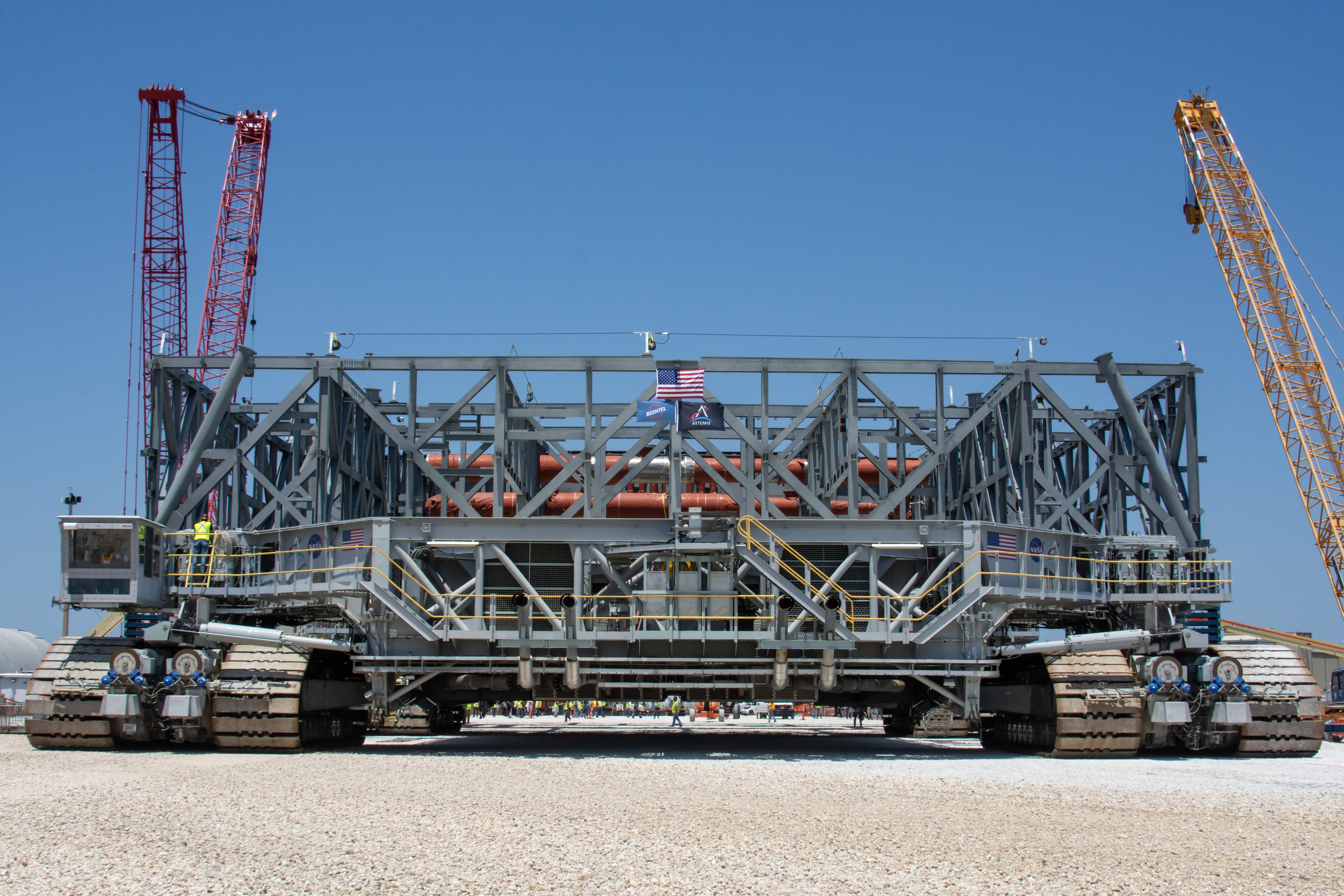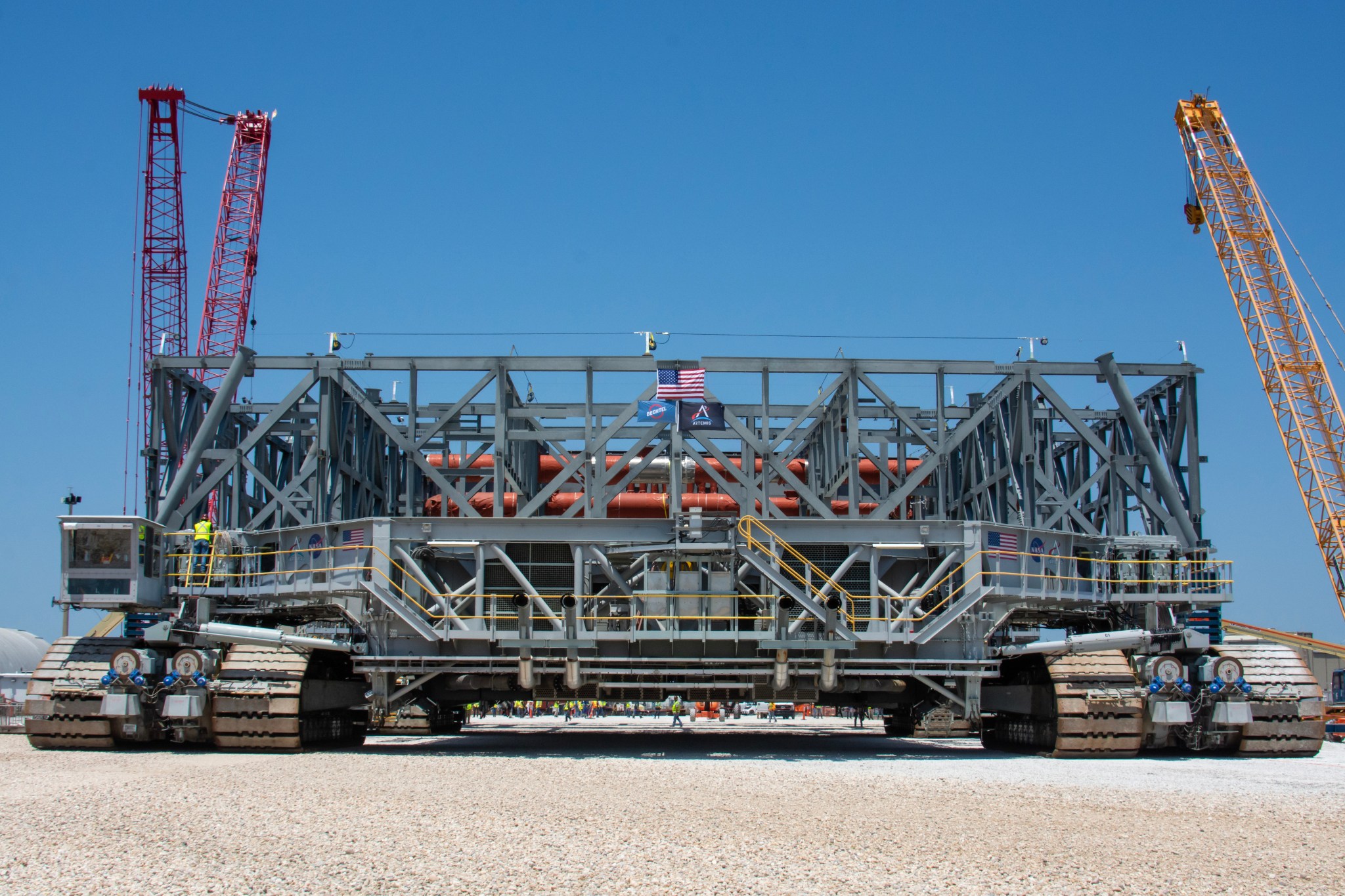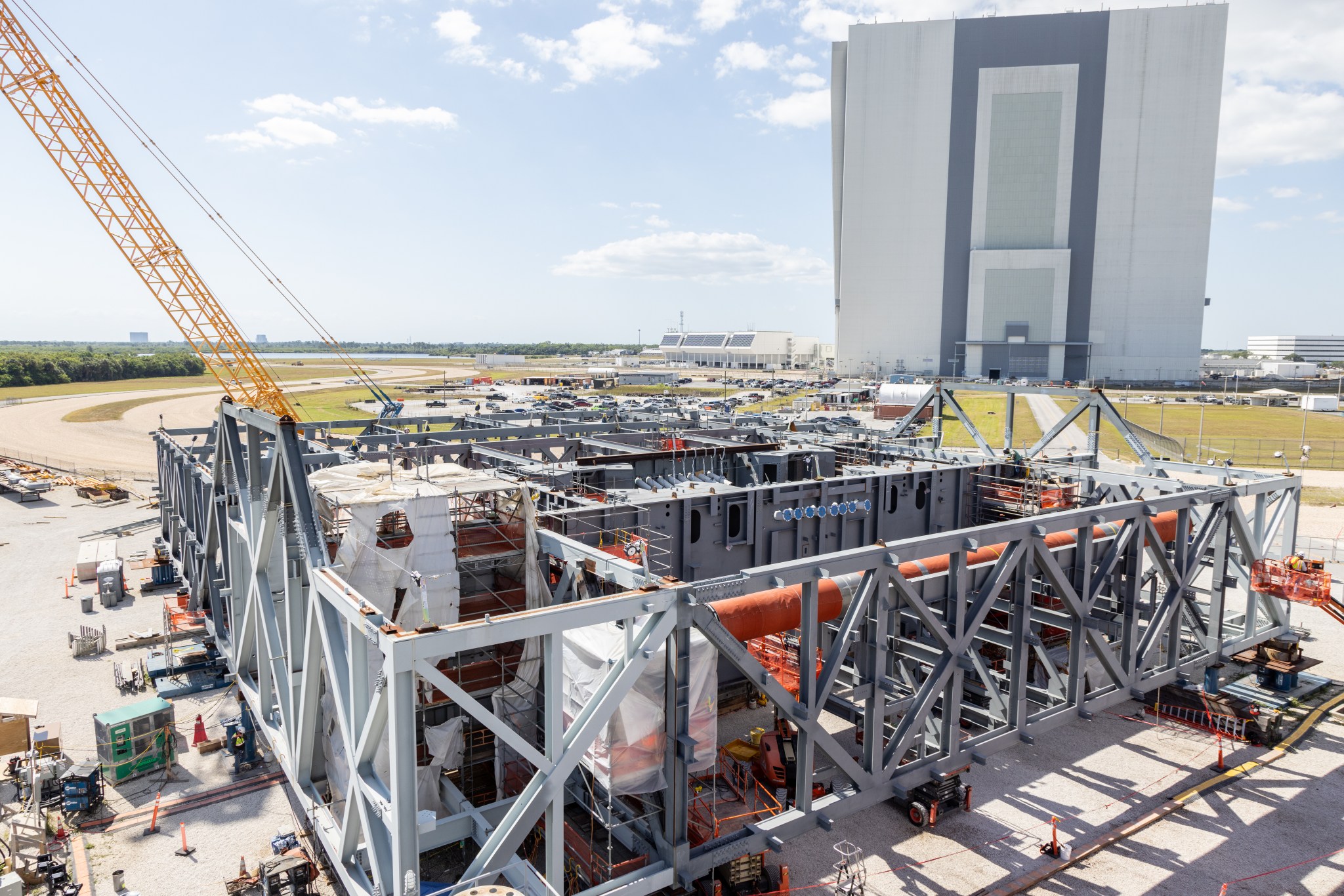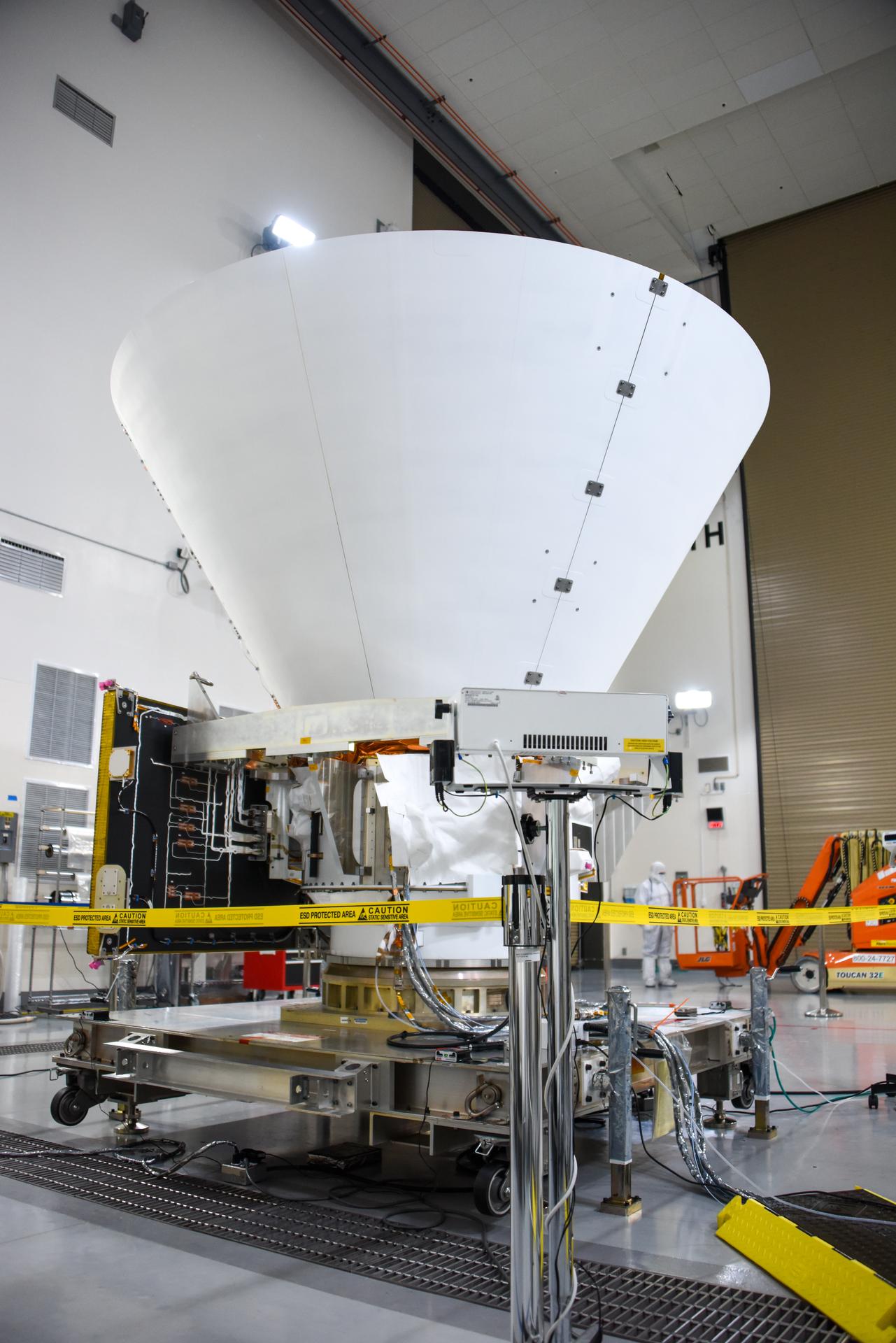NASA’s New Mobile Launcher Stacks Up for Future Artemis Missions
The foundation is set at NASA’s Kennedy Space Center in Florida for launching crewed missions aboard the agency’s larger and more powerful SLS (Space Launch System) Block 1B rocket in support of Artemis IV and future missions. On May 9, 2024, teams with NASA’s EGS (Exploration Ground Systems) Program and contractor Bechtel National Inc. transferred […]

The foundation is set at NASA’s Kennedy Space Center in Florida for launching crewed missions aboard the agency’s larger and more powerful SLS (Space Launch System) Block 1B rocket in support of Artemis IV and future missions. On May 9, 2024, teams with NASA’s EGS (Exploration Ground Systems) Program and contractor Bechtel National Inc. transferred the primary base structure of the mobile launcher 2 to its permanent mount mechanisms using the spaceport’s beast-mode transporter – the crawler.

“Seeing mobile launcher 2 take shape has been incredible,” said Shawn Quinn, program manager for NASA’s EGS Program. “Anytime we can see the manifestation of our work into physical hardware means a lot to the EGS team. It is also inspiring for the future of Artemis, with each bolt and truss put in place signifying the next phase of humanity’s return to the Moon.”
Why is the “Jack & Set” process necessary?
Teams at Bechtel fabricated temporary pedestals 8 feet off the ground, facilitating a much more efficient and safer initial steel build process by sitting lower to the ground. These extremely large steel truss subassemblies, some weighing over 100,000 pounds each, sat on temporary bases. Once the entire 2.6 million-pound skeleton of the base was fully torqued and welded, teams used a specialized heavy-duty jacking system to raise the base to allow sufficient space for the spaceport’s crawler to be situated underneath the structure ahead of repositioning.
Four self-propelled modular transporters were driven underneath the sides of the steel assembly and then lowered the base onto eight surrounding jacks. Once secured, teams removed the transporters and used jacks to raise the base 18 feet to allow for crawler access underneath the structure. The crawler was then positioned under the new base skeleton, raised the structure a few inches higher, and repositioned it about 200 feet to the six permanent pedestals, called mount mechanisms, completing the “jack and set” operation.
“The jack & set milestone is a huge accomplishment for the NASA and Bechtel team,” said Darrell Foster, ground systems integration manager for NASA’s EGS Program. “It represents the hard work of hundreds of people – not only in the field putting the pieces together, but engineers and analysts who custom designed this structure, subcontracting buyers and delivery managers who drove the process to get the materials to the site, and the several offsite fabrication shops across the country.”

Now poised atop the new launch mount mechanisms at its park site near the spaceport’s Vehicle Assembly Building, teams will begin installing critical piping and electrical equipment inside the base. The mobile launcher will remain at the park site throughout the build and commissioning phases of the project.
The mobile launcher serves as the primary interface between the ground launch systems, SLS rocket, and Orion spacecraft that will launch the SLS Block 1B rocket, with its enhanced upper stage, to the Moon, allowing the agency to send astronauts and heavier cargo into lunar orbit than its predecessor, SLS Block 1. With Artemis, NASA will land the first woman, first person of color, and its first international partner astronaut on the lunar surface and establish long-term exploration for scientific discovery and to prepare for human missions to Mars.
What's Your Reaction?



















.jpg?#)
































